Home
>
Vegetables and Herbs
>
Selection, Culture and Care
>
What is the difference between pumpkins, squashes and gourds?
What is the difference between pumpkins, squashes and gourds?
Pumpkins, squash and gourds are members of the enormously diverse Cucurbitaceae family, which contains more than 100 genera and over 700 species. They have been providing mankind with food and utilitarian objects since before recorded history. Various members of the genus Cucurbita are known as squash or gourds.
Names differ throughout the world, but in the United States, any round, orange squash used for pies or jack-o-lanterns is likely to be called a pumpkin. But the term “pumpkin” really has no botanical meaning, as they are actually all squash. Squash are divided into two categories: tender or summer squash, and hard-skinned or winter squash. Examples of summer squash include zucchini, pattypan, straightneck, crookneck and other types. Winter squash include small to medium hard-skinned squash such as the acorn, small hubbard, miniature pumpkin and spaghetti types, as well as the large hard-skinned types, including banana, butternuts, cheese pumpkins, cushaws, and large hubbards, among others.
Botanists use distinctive characteristics of leaves, seeds and fruit stalks to classify the different species. The origins of these species are lost in time, but all are assumed to have originated in the Western Hemisphere, principally South and Central America and Mexico. Variety selection for the many distinct shapes, sizes and colors has occurred in all cultures worldwide.
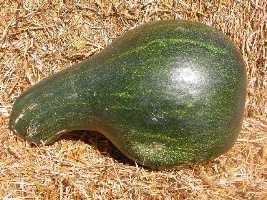 |
Cucurbita argyrosperma (syn. C. mixta), which includes the cushaw pumpkins and winter squash. Cultivar pictured ‘Hopi’.
|
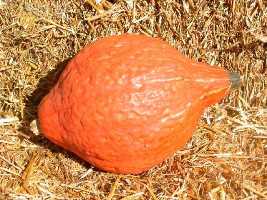 |
Cucurbita maxima, which includes most of the large, round decorative pumpkins, the turban gourds, the large hubbards, as well as banana and buttercup squash. Cultivar pictured ‘Golden Hubbard’.
|
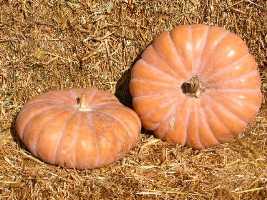 |
Cucurbita moschata, which includes the large cheese and crookneck pumpkins as well as the butternut squash. Cultivar pictured ‘Long Island Cheese’.
|
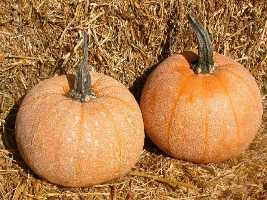 |
Cucurbita pepo, which includes the field, pie, naked-seed and miniature pumpkins, as well as acorn squash and ornamental gourds. Cultivar pictured ‘Winter Luxury Pie’.
|
Gourds are defined as hard-shelled durable fruit grown principally for ornament, utensils and general interest. Three types of gourds are represented here:
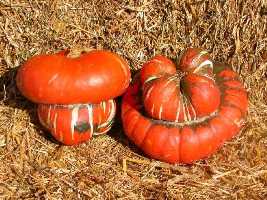 |
The colorful turban gourd, which we have already learned is actually a variety of Cucurbita maxima. Cultivar pictured ‘Turk’s Turban’.
|
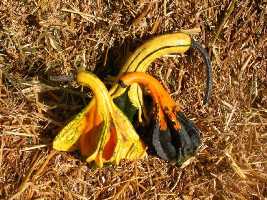 |
The small, highly colorful ornamental gourds, which are all distinct varieties of Cucurbita pepo. Cultivar pictured ‘Autumn Wings’.
|
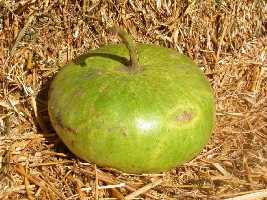 |
Hardshell, Bottle or Dipper gourds which are not Cucurbita, but family relatives in the species Lagenaria siceraria, which is assumed to be native to Africa, but spread to tropical Asia and the Americas in prehistoric times. Cultivar pictured ‘Canteen Gourd’.
|
Hardshell gourds remain green throughout the growing season, but dry to a brownish-tan when fully cured. They have traditionally been utilized as bottles and containers for liquid and dry materials, as well as food, medicine, musical instruments, artistic media and many other uses.
Like the squash, cultivar selections in various shapes and sizes have continued from prehistoric times to the modern era.